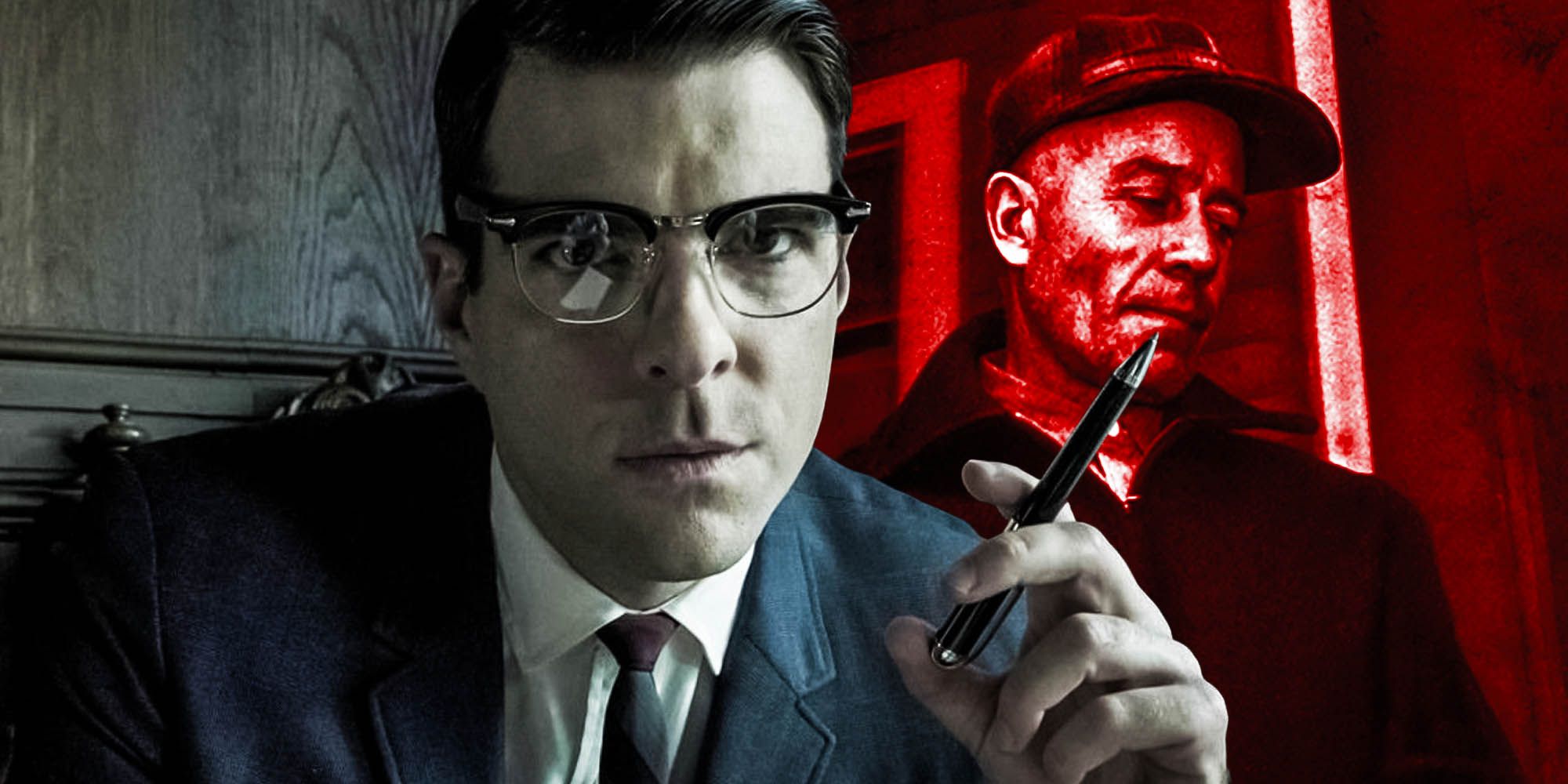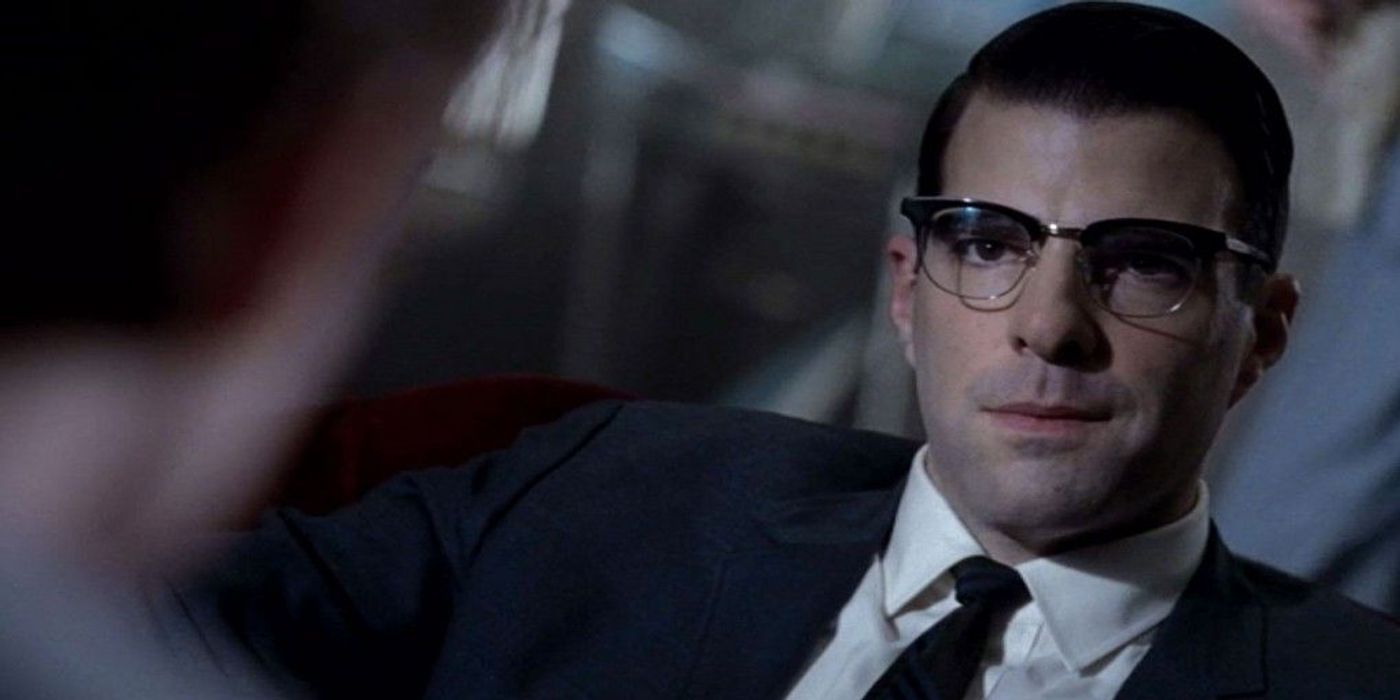American Horror Story: Asylum's main antagonist Bloody Face is actually based on a real-life serial killer who also inspired a lot of other famous characters. Season 2 of American Horror Story opens with a Bloody Face copycat, stalking a couple who are exploring the abandoned Briarcliff Sanitarium. The season switches between two timelines, with several copycat Bloody Faces operating in the present and the first Bloody Face working in 1964. The original Bloody Face's acts of violence and reign of terror are so well-known in the world of the series that the character is essentially an urban legend in the present timeline.
Audiences are set to believe that Kit Walker (Evan Peters) is the killer. Thus, he is detained in Briarcliff. Later in the series, it is revealed to be Dr. Oliver Thredson (Zachary Quinto). Disclosed in episode 5, audiences were let into the true horror of Dr. Thredson's actions when he kidnaps Lana Winters (Sarah Paulson) and turns on a lamp, but the lampshade is made from human skin. Thredson attempts to "cure" Lana by making her kiss the deceased body of her girlfriend Wendy, as well as turn Lana into a maternal replacement through confinement, assault, and torture. The idea behind this prolific antagonist didn't come from thin air, however, and neither did the human skin lampshade.
Bloody Face is based on the notorious serial killer Ed Gein. Born in 1906 and a farmer from Wisconsin, he was named by the media The Butcher of Plainfield. While Bloody Face's victim count is confusing, due to Bloody Face's various copycats, Ed Gein admitted to killing two women (Mary Hogan and Bernice Worden) and robbing nine graves, though the real number isn't known. Gein began graverobbing between 1947 and 1952, after the death of his abusive mother in 1945. The graves Gein chose were middle-aged women that he said reminded him of his mother. When Bernice Worden went missing in 1957, the police found the last purchase made at her hardware store to be antifreeze bought by Gein. Police raided Gein's house, and what they found was a litany of horrors. Gein had an affinity for objects crafted out of human flesh, not that different from what Lana Winters discovered in Thredson's home. The trophies Gein made included bowls, leggings, a corset, and the famous lampshade. Gein's goal: a woman suit made from human skin so that he could become his mother.
Quinto played the slippery character well, even though Quinto did not return to AHS. Most of Gein's crimes and his relationship with his mother are explored heavily in Thredson, though Gein and Thredson do differ in terms of intellect and presence. Gein was known by his peers to be strange and quiet, a far cry from the amiable facade of Thredson. Gein was ruled unfit to stand trial due to insanity and mental incompetence. While Thredson was killed via gunshot by Lana Winters, Gein's death was much less dramatic. The killer died of lung cancer in 1984 at the age of 77 in the Mendota Mental Health Institute. Despite these small differences, the link between Bloody Face/Thredson is pretty clear. Especially when the fictitious and the real killer are analyzed side-by-side.
Many American Horror Story: Asylum characters are based on real people. That being said, Ed Gein's horrific story is a special case in that it has had such an impact on popular culture. Gein is also the inspiration behind a myriad of notable antagonists, but his most famous doppelgängers are Bates Motel and Psycho's Norman Bates, The Texas Chainsaw Massacre's Leatherface, and The Silence of the Lambs' Buffalo Bill. Asylum may be one of American Horror Story's best seasons, and a lot of it is because of Bloody Face plotline, or rather, the terrifying real story of Ed Gein.


